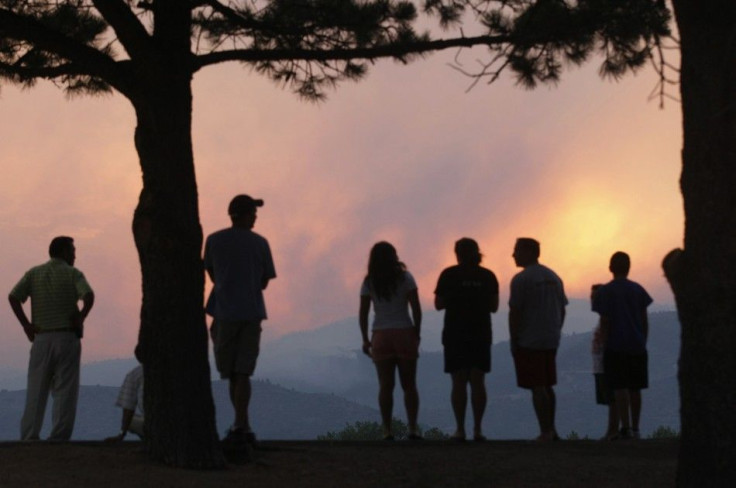Colorado Wildfires Threaten Summer Tourism

Blazing wildfires have the tourist-dependent communities of northern and central Colorado on edge as dramatic images of flaming vacation homes permeate the news.
Fires at popular summer recreation areas near Colorado Springs and Fort Collins continued to burn this week, causing evacuations and cancellations of many events during Colorado's peak summer tourism season. Al White, director of the Colorado Tourism Office, says summertime accounts for about two-thirds of the state's tourism revenue.
Colorado had a record year for tourism in 2011, welcoming 57.9 million visitors, White said, citing a report by Longwoods International. That's the most visitors ever in the state's history and brought total domestic tourism spending to a record $10.76 billion, nearly 4 percent higher than in 2010.
Colorado is already one of the top 10 states for outdoor recreation in the U.S., with ample opportunities for backpacking, hiking and camping. The tourism industry is dependent on visits to the great outdoors, but there are fears that the fires -- the state's worst since the drought-stricken year of 2002 -- may leave many high and dry this season.
Over the weekend, a rapidly moving blaze destroyed more than a dozen vacation cabins in Estes Park near the main entrance to Rocky Mountain National Park, the state's most popular outdoor recreation area. Other resort facilities near Pikes Peak and the Garden of Gods, outside Colorado Springs, were similarly affected by the Waldo Canyon Fire. The blaze forced the evacuation of the tourist town of Manitou Springs and shut the Pikes Peak Highway.
The High Park Fire, west of Fort Collins, has become the second-largest on record in the state and one of its most destructive, consuming some 83,205 acres, according to the latest figures. Most hotels and tourist businesses in Fort Collins remain open, but outfitters who run tours on the Poudre River have had to cancel trips.
White is quick to point out that sensational media coverage could make things worse.
With 23 million acres of public lands and less than 100,000 acres affected, there is still plenty for people to see and do in Colorado, he said.
Indeed, many businesses far from the forest fires were struggling Monday to remind travelers that they were, in fact, fire-free.
White spoke with several businesses across the state to assess their reservations and cancellations and said Colorado has seen little tangible impact thus far. Reservations are actually up significantly, he said, and the biggest concerns people have are simple inquiries like Can I go up Pikes Peak today or Can I have a campfire?
The National Park Service has banned campfires, including charcoal fires, in Rocky Mountain National Park. Only petroleum-fueled stoves and grills are allowed at designated back-country campsites, campgrounds and picnic areas. The state has also put a ban on informal fireworks that's sure to dampen Fourth of July plans. But this, White said, is hardly new.
It's nothing the state hasn't gone through before, he said, and all indications are still that it will be a record year for tourism. We have plenty of summer left. If it starts raining, fire season could be a thing of the past. If it stays hot and dry, we could see some more difficult times ahead. But we'll deal with it.
Concerned visitors can stay informed by visiting Colorado.com and checking for detours and road closures on the Colorado Department of Transportation's website. On Twitter, check the #HighParkFire and #WaldoCanyonFire hashtags and follow @COEmergency. There's also a Facebook page for the Waldo Canyon Fire.
© Copyright IBTimes 2024. All rights reserved.












